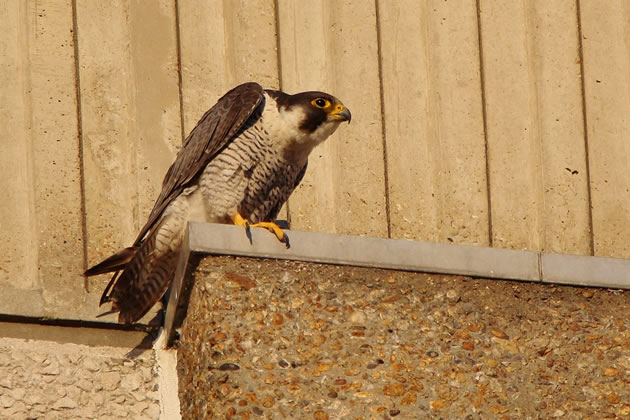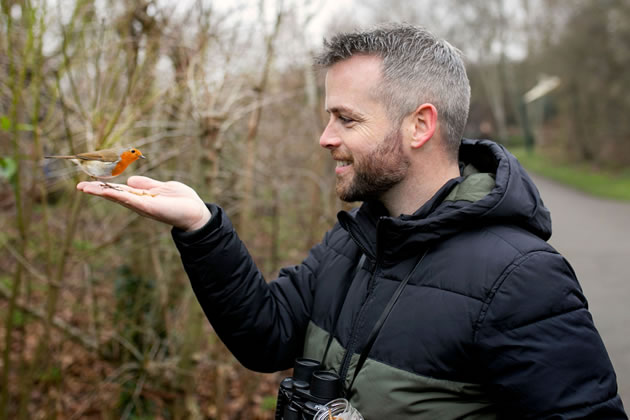Birds of Prey Take Up Residence in Ealing Hospital
A pair of peregrine falcons are roosting on the roof of the building

Freddie the Peregrine Falcon at Ealing Hospital. Picture: Rachael Webb
|
Two sharp-eyed residents have the opportunity to live in a penthouse suite with a difference on the roof of Ealing Hospital.
The pair of peregrine falcons have been using the hospital to roost on for nearly a year after being spotted by members of Ealing Wildlife Group (EWG).
Now, the group has installed a breeding box on the roof of the ten-storey building hoping the birds of prey make it a permanent nesting site on which to raise their young.
Peregrines, whose traditional habitat are cliff faces, began migrating to urban areas after facing near extinction from now banned pesticides in the 1950s.
The birds found tall buildings with largely inaccessible roof space an ideal home along with a ready supply of food in the shape of London’s pigeon and parakeet population.
“We had several reported sightings of them around the hospital,” said Sean McCormack who founded EWG several years ago.

Sean McCormack of the Ealing Wildlife Group. Picture: Kimberley Miller
The group’s 3,700 strong Facebook group regularly report sightings of wildlife in the borough including barn owls, hobby falcons, several types of bat and the rare great crested newt championed by former Mayor of London Ken Livingstone.
The peregrines - named Dusty and Freddy after two of Ealing’s most famous singers - are now approaching breeding age and are being encouraged to make the hospital their home with a gravel lined box in which to lay their eggs built courtesy of EWG member David Gordon Davy
Sean added, “Peregrines are highly territorial and mate for life so we hope they will settle here. Their nearest neighbours are in Southall with a further pair west in Brentford.
“Birds of prey have extraordinary eyesight so they won’t have any trouble spotting the box and going to investigate. The fact that it is remote, quiet and there is no threat from any other predator should make it tempting enough.”
A motion camera has been installed opposite the opened sided box which provides shelter from the weather although the group won’t be able to access any images until later this year to avoid disturbing the birds.
Sean added, “The hope is that we can later put in a live feed camera but will know by the spring if they have bred as we’ll be able to see them bringing food to the nest. We’d love to hear from any local businesses that might be able to help sponsoring the webcam equipment moving forward.
“Peregrines usually produce 2-4 chicks a year which are then taught how to hunt after which they are driven out in the autumn to find their own territory.
“It’s very exciting news as peregrines are still relatively rare and we look forward to seeing what happens in the spring.”
Ealing Wildlife Group is involved in a number of conservation projects and is always keen to hear from anyone who would like to volunteer.
February 4, 2021